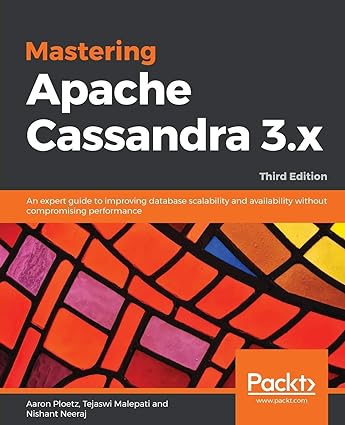Question
Question 2 and 3 are what i need help with, below shows my work for question 1 as well Generate an array x that has
Question 2 and 3 are what i need help with, below shows my work for question 1 as well
Generate an array x that has =100n=100 random numbers that are uniformly distributed over the interval [0,1)[0,1). Look up how to use the uniform() submodule of numpy.random for this question.
In [7]:
x = np.random.uniform(0,1,100)
x
Out[7]:
array([0.7686359 , 0.00193933, 0.46081786, 0.46102876, 0.68163423, 0.14500163, 0.45691225, 0.7292489 , 0.90528235, 0.0911936 , 0.67765543, 0.38597125, 0.71937148, 0.15770145, 0.49757855, 0.54101159, 0.66140345, 0.27425061, 0.5645736 , 0.76021416, 0.10858791, 0.23388888, 0.2446358 , 0.77459127, 0.28161746, 0.13943564, 0.04875112, 0.31839392, 0.3419016 , 0.13703515, 0.96244035, 0.7650515 , 0.45154491, 0.16891573, 0.84509981, 0.83959792, 0.01358548, 0.70807755, 0.80747734, 0.82473523, 0.15618429, 0.78666749, 0.57486057, 0.5219147 , 0.33921758, 0.35436014, 0.06144321, 0.40319046, 0.20456046, 0.32178498, 0.11046061, 0.19810378, 0.66004367, 0.20883655, 0.58052234, 0.68550039, 0.3471392 , 0.46675729, 0.73755096, 0.32242399, 0.78330108, 0.69362819, 0.73173772, 0.97009438, 0.49582071, 0.72609253, 0.99586097, 0.79207091, 0.70651406, 0.48064219, 0.31361071, 0.20625934, 0.50786544, 0.23537456, 0.79965622, 0.22791709, 0.40573057, 0.1608864 , 0.33956229, 0.21248393, 0.98982715, 0.03081672, 0.21761966, 0.59420732, 0.32359678, 0.48700202, 0.2058104 , 0.81784287, 0.00118625, 0.71005526, 0.82820403, 0.47965642, 0.96900737, 0.87204295, 0.70630899, 0.59851428, 0.15654434, 0.31299372, 0.40188938, 0.97215467])
Question 2: We want to divide the numbers in the interval [0,1)[0,1) into equally spaced sub-intervals. For example, say we want to take an array of 100 numbers that have values greater than or equal to 0 and less than 1. We might like to divide these numbers into 4 equally spaced half-open sub-intervals: 0 to 0.25; 0.25 to 0.5; 0.5 to 0.75; and 0.75 to 1.
Write a function named partition_array using loops and if statements that takes the array x along with the number S of sub-intervals as inputs and outputs (returns) a new list numentries_subintervals with S entries. Each entry in numentries_subintervals will contain the number of values from x within each of the sub-intervals. The function will also output a second list that contains the mid points of each corresponding sub-interval. Test it on the array generated in Question 1, use =5S=5 subintervals, and print the function outputs to verify the results.
NOTE: You can assume that your input array x will have values in the interval [0,1)[0,1).
Your results should be something like the following (Your number of entries will vary slightly):
The number of entries in the subintervals are [15, 18, 19, 26, 22] The subinterval mid points of the intervals are [0.1, 0.3, 0.5, 0.7, 0.9]
In [ ]: # Put your pseudocode, in the form of comments, and code here
Question 3: Now, write code to create a bar plot of the number of entries in the sub-intervals. The x coordinates of the bars are the mid points of the intervals and the heights are the total number of elements of the array x residing in each interval (basically the results from your function above). Look up the function matplotlib.pyplot.bar. Set the widths of the bars to the width of each subinterval.
Repeat the experiments in Questions 1 and 2 and generate the bar plots for =20S=20 and =102n=102, =103n=103, and =105n=105 (three cases). Make sure to label all the x and y axes and give each plot an expressive title that indicates the value of n. Matplotlib contains the function subplot() that enables making multiple plots and arranging them together. Plot the three bar plots for the three values of n together in a single row. Use the command plt.tight_layout() to arrange the subplots cleanly.
Step by Step Solution
There are 3 Steps involved in it
Step: 1

Get Instant Access to Expert-Tailored Solutions
See step-by-step solutions with expert insights and AI powered tools for academic success
Step: 2

Step: 3

Ace Your Homework with AI
Get the answers you need in no time with our AI-driven, step-by-step assistance
Get Started


